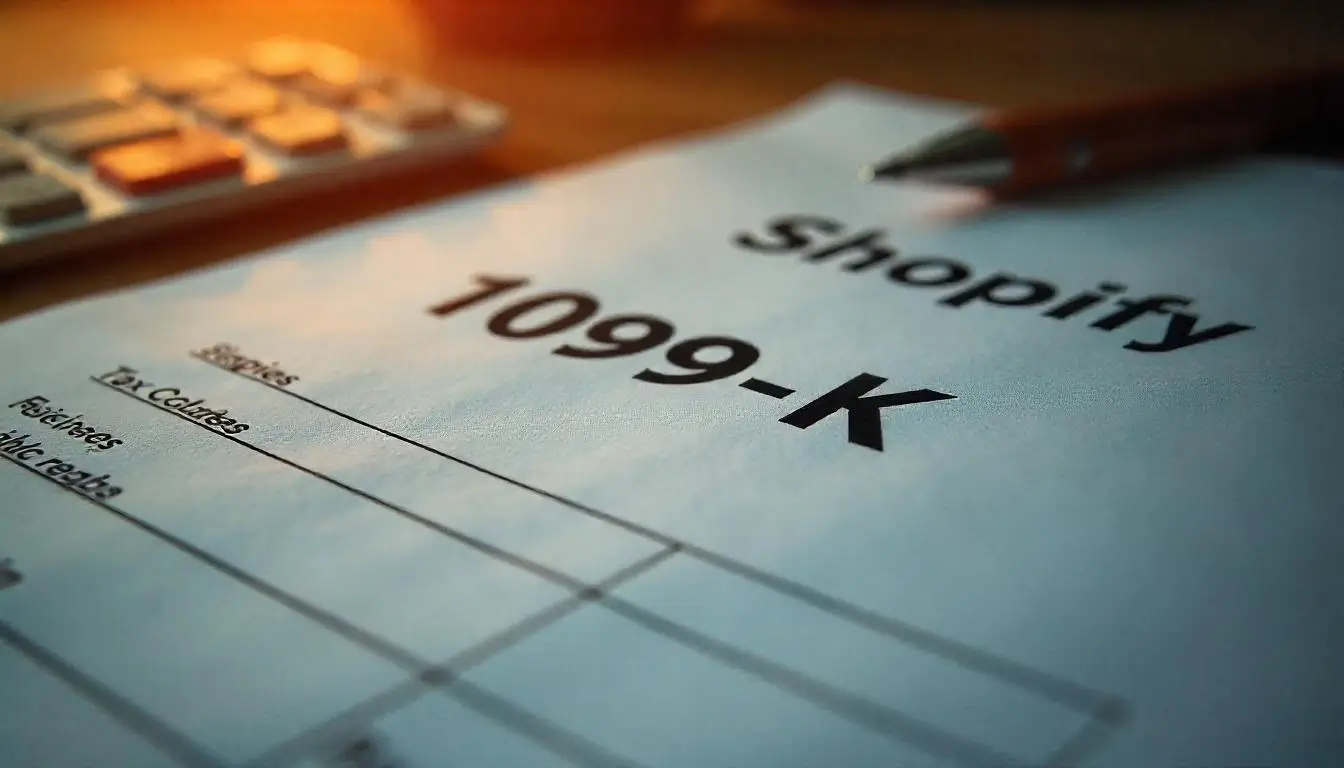If you’re a Shopify seller, understanding the Shopify 1099-K tax form is essential. As eCommerce continues to grow, tax reporting has become more structured. Shopify 1099-K is a document that reports your transactions to the IRS, ensuring compliance with federal tax regulations. In this guide, we’ll break down what the 1099-K is, who receives it, and how to handle it effectively.
📌 Table of Contents
- What is Shopify 1099-K?
- Who Receives a Shopify 1099-K?
- How to Access Your Shopify 1099-K
- How to Report Shopify 1099-K on Your Taxes
- Common Mistakes to Avoid
- Frequently Asked Questions
- Final Thoughts
🛍️ What is Shopify 1099-K?
Shopify 1099-K is a tax document issued to sellers who meet specific sales thresholds. This form is required by the IRS (Internal Revenue Service) and reports the total payment transactions processed through Shopify Payments. It helps track revenue and ensures tax compliance.
📝 Key Points:
✅ Reports total sales revenue processed via Shopify Payments
✅ Issued by Shopify, not PayPal or third-party payment providers
✅ Used for income tax filing purposes
✅ Sent to both the IRS and the seller
💰 Who Receives a Shopify 1099-K?
Shopify issues 1099-K forms to sellers who meet the following conditions:
🔹 $20,000+ in total sales processed through Shopify Payments
🔹 200+ transactions within a calendar year
📢 Important Update: Some states have lower thresholds (e.g., $600 in some states like Massachusetts, Vermont, and Maryland). Always check local regulations.
📂 How to Access Your Shopify 1099-K
Follow these steps to download your 1099-K form from Shopify:
1️⃣ Log into your Shopify Admin
2️⃣ Navigate to Settings > Payments
3️⃣ Scroll down to Shopify Payments
4️⃣ Click on View 1099-K Form
5️⃣ Download the PDF for your records
📝 Tip: Keep a digital and printed copy for tax filing purposes!
📊 How to Report Shopify 1099-K on Your Taxes
When filing taxes, Shopify sellers must include their 1099-K income on their tax return. Here’s how:
📌 For Sole Proprietors & Single-Member LLCs:
✅ Report earnings on Schedule C (Form 1040)
✅ Deduct business expenses to reduce taxable income
📌 For Partnerships & Corporations:
✅ Report income on Form 1065 or 1120
✅ Allocate revenue accordingly based on business structure
💡 Pro Tip: Use an accountant or tax software to ensure proper deductions and compliance.
❌ Common Mistakes to Avoid
🚫 Not Keeping Records: Always reconcile Shopify reports with bank statements.
🚫 Ignoring Sales Tax: Shopify 1099-K reports gross sales, not net income (after taxes/fees).
🚫 Missing Deductions: Track expenses like shipping, marketing, and website costs to reduce taxable income.
❓ Frequently Asked Questions (FAQ)
1. Does Shopify send 1099-K for PayPal transactions?
No, Shopify only issues 1099-K for Shopify Payments transactions. PayPal and other gateways send their own tax forms.
2. What if I don’t meet the $20,000 sales threshold?
If you don’t qualify for a 1099-K, you still need to report earnings on your tax return.
3. Can I deduct Shopify fees from my taxes?
Yes! Shopify transaction fees, app subscriptions, and advertising costs are deductible business expenses.
4. What happens if my 1099-K form has errors?
Contact Shopify Support immediately to correct discrepancies before filing your taxes.
🚀 Final Thoughts
Navigating taxes as a Shopify seller can be overwhelming, but understanding your Shopify 1099-K is crucial. Keep track of your sales, expenses, and tax obligations to avoid surprises during tax season.
📢 Ready to grow your Shopify store? Start selling today! Click Here to Sign Up 🔗
Let me know if you need further assistance. Happy selling! 🎉
- Is It Safe to Buy from Ulta Online? Exploring If Ulta Beauty is Legit in 2025
- Is Ecommerce Profitable: A Complete Guide for 2025
- Top eCommerce SEO Packages for 2025: Boost Your Online Store's Visibility
- Top AI Tools for Ecommerce in 2025
- How AI Is Revolutionizing Ecommerce in 2025
- Taobao vs. Alibaba: Which One is Right for You?
- Shopify Website Builder vs Competitors: Which One Wins?
- My Shopify Website Builder Journey: Building My Dream Store in 2025! 🚀
- Understanding Shopify 1099-K Tax Forms for 2025
- Shopify 1099-K: What Sellers Need to Know
- RaveDigitalAgency: Top Shopify eCommerce Agency for Your Store
- Best Shopify Dropshipping Tips for Beginners
- How to Start a Shopify Dropshipping Business in 2025
- Grow Your Business with Shopify eCommerce Experts at RaveDigitalAgency
- Why RaveDigitalAgency is the Best Shopify eCommerce Agency
- PSG eCommerce Grant: Boost Your Online Business Today
- How to Apply for the PSG eCommerce Grant in 2025
- How to Build an eCommerce Website: A Beginner’s Guide
- Top Reasons to Build Your eCommerce Website with Shopify
- Best B2B eCommerce Solutions for Growing Businesses
- Electronic Commerce (E-Commerce): A Beginner’s Guide to Online Selling
- The Rise of Electronic Commerce (E-Commerce) and Its Impact on Businesses
- Electronic Commerce (E-Commerce): Key Trends Shaping the Industry
- Electronic Commerce vs. Traditional Commerce: Why E-Commerce Wins
- How Electronic Commerce (E-Commerce) is Transforming Retail in 2025
- Electronic Commerce (E-Commerce): The Future of Online Business
- Top 10 eCommerce Web Design Agencies in 2025: Who’s Leading the Game?
- DHL eCommerce Customer Service: How to Get Fast Support in 2025
- Top Ecommerce Website Builders: Launch Your Store in Minutes
- Best Tools for Building an Ecommerce Website in 2025


